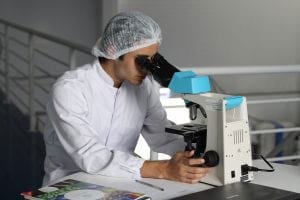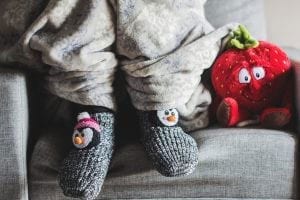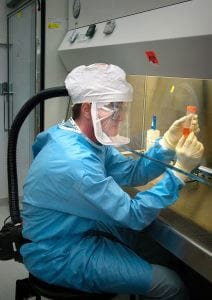I’ve certainly never been a runner — and neither was Diane Owens, at least for a while. The mother, who lives in Southbury, CT, admits that it used to be one of her least favorite activities. But she took to running when her son, Alex, was diagnosed with neurofibromatosis (NF) at just four months old. According to the Daily Voice, Diane began running to fundraise for Children’s Tumor Foundation, which drives research, education, and care for the NF community. Most recently, Diane ran in the New York City Marathon, which took place on November 7, 2021. This passionate and loving mother is determined to make a difference.
Diane’s Journey
Of course, Diane’s journey to get to this point was not always easy. She began running for the Children’s Tumor Foundation in 2013, raising funds along the way. Her son Justy also joined the cause at just 4 years old, participating in fun runs, and has continued through his life. However, in 2016, Diane was faced with a formidable opponent: Guillain-Barré syndrome (GBS), a rare condition in which the immune system attacks the peripheral nervous system.
As a result of her GBS diagnosis, Diane became paralyzed. She was in pain, had difficulty speaking, breathing, and eating, and required time in the intensive care unit as she healed. But Diane is a fighter. Nine months after leaving the hospital, she ran in the California International Marathon; she even says that it is the fastest race she’s ever run!
Now pretty much nine years into her journey, Diane has raised $135,000 through her runs. Altogether, including other events held with her husband, she has helped raise over $500,000 for NF research. She says that her and her family have nowhere to go but up. While she didn’t prepare as much for the NY Marathon, Diane isn’t worry about it; she had much more fun spending time with her loved ones and her support system. Moving forward, she remains consistently inspired to make a change and to raise awareness around neurofibromatosis.
Neurofibromatosis
There are three types of neurofibromatosis, a rare genetic disorder which affects the nervous system. In each case, neurofibromatosis causes tumors, which are usually benign, to form on healthy nerve tissue. For some patients, these tumors progress to become malignant. The first type of neurofibromatosis is type 1 (NF1), which usually begins in childhood. Symptoms, such as skin changes and deformed bones, are often present at birth. Next, neurofibromatosis type 2 (NF2) often begins in teenage years. Finally, schwannomatosis is the rarest form of neurofibromatosis, and can cause intense pain.
For each of the three types, there is a different genetic cause: NF1 for NF1, NF2 for NF2, and NF2 or SMARCB1 for schwannomatosis. Symptoms also differ. For NF1, symptoms include:
- Bone deformities
- Neurofibromas (soft bumps on/under the skin)
- Tiny bumps on the irises
- Freckling in the armpits or groin
- Macrocephaly (larger-than-average head size)
- Learning disabilities
- Short stature
Next, symptoms for NF2 include gradual hearing loss, tinnitus (ringing in the ears), poor balance, and headaches. Finally, those with schwannomatosis may experience symptoms such as:
- Muscle loss
- Numbness or weakness throughout the body
- Tumor formation on the skull, as well as the spinal and peripheral nerves
Learn more about neurofibromatosis.








